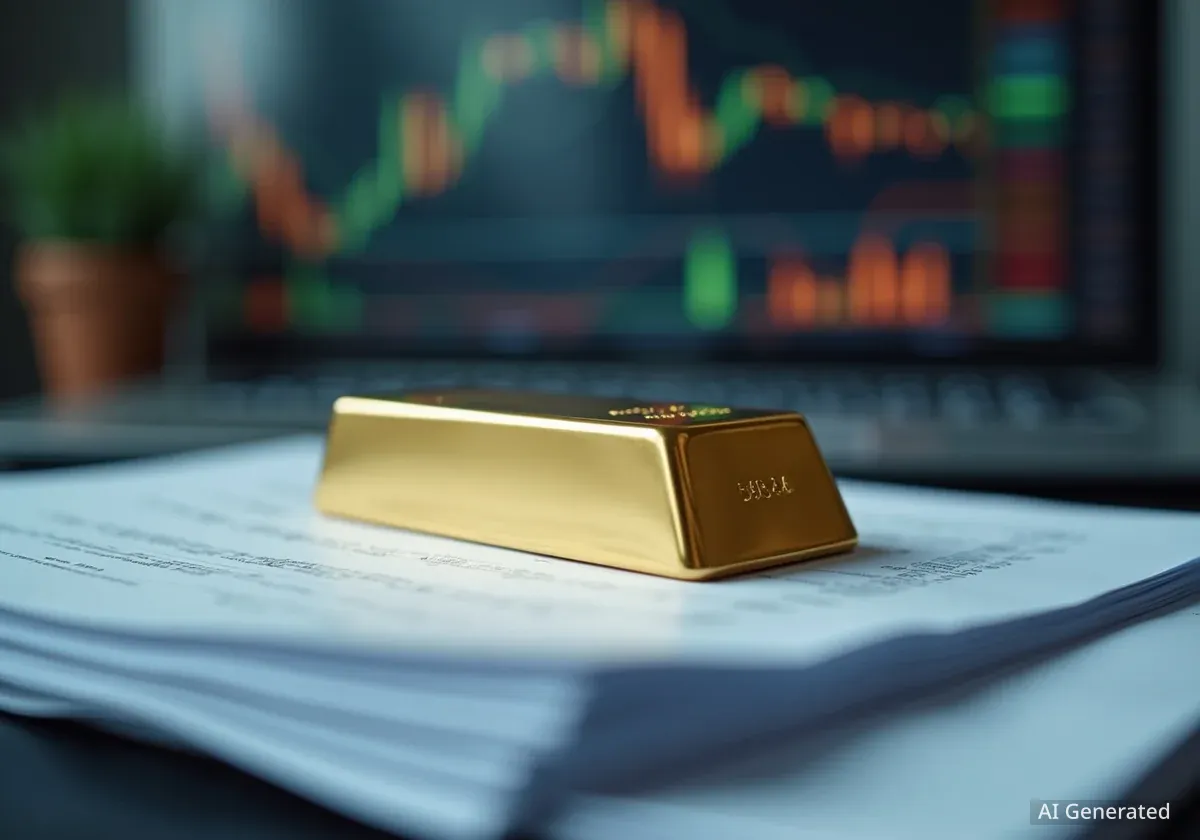The exchange-traded fund (ETF) industry has reached a significant milestone, with total inflows for 2025 surpassing $1 trillion in October. This marks the fastest pace at which the industry has ever achieved this figure, signaling strong investor confidence across various asset classes.
According to analysis from State Street Investment Management, the momentum is expected to continue, with a projection that total annual inflows could reach as high as $1.35 trillion by the end of the year. The surge in investment is being driven by exceptional demand for fixed income and precious metal funds.
Key Takeaways
- ETF inflows crossed the $1 trillion threshold on October 14, 2025, a new record for the industry.
- State Street projects that total inflows for the year could reach $1.35 trillion.
- Fixed income (bond) ETFs and gold ETFs are experiencing record-breaking demand, leading the growth.
- Strong performance across most asset classes, including stocks, bonds, and commodities, has encouraged investment.
A Record-Setting Year for ETFs
Investor capital is flowing into exchange-traded funds at an unprecedented rate. The industry topped $1 trillion in annual assets this month, achieving the milestone nearly two months earlier than in 2024, when the mark was crossed on December 11.
The accelerated pace was accurately forecasted by Matt Bartolini, global head of research strategists at State Street Investment Management. He predicted the industry would surpass the $1 trillion level by October 15, and the milestone was reached a day ahead of schedule.
Broader Market Strength
The significant inflows into ETFs reflect a wider trend of positive returns across the financial markets. Assets including stocks, bonds, and commodities have largely outperformed cash, creating an environment conducive to investment and risk-taking.
"It's been a very good year to own assets. Assets largely across the board have outperformed cash. So, it's just been a positive returning environment for assets," Bartolini explained to FOX Business. "I think we have seen flows come in because of the sort of risk on type of behavior, but also the positive performance on assets."
Fixed Income Funds Lead the Charge
One of the primary drivers of this year's record inflows has been the remarkable growth in demand for fixed income ETFs. These funds, which invest in bonds, have become increasingly popular among a wide range of investors.
In the first nine months of 2025 alone, bond ETFs have already surpassed their previous full-year inflow records. Last month, these funds attracted an impressive $39 billion in new capital.
Bartolini noted that the appeal of bond ETFs has expanded significantly. Initially used as basic portfolio building blocks, they now include more sophisticated, actively managed strategies with established performance records.
"Fixed income ETFs – those continue each year to just gain more and more in popularity," Bartolini said. "The use cases across fixed income ETFs have expanded beyond just simple beta building blocks to now contain more active strategies that have identifiable track records."
Gold Shines Bright Amid Market Optimism
Alongside bonds, precious metals have been a major focus for investors. Gold ETFs are also on track to set new annual inflow records this year, driven by a combination of market factors and the metal's strong price performance.
The price of gold has been trading above $4,100 per ounce, reflecting sustained investor interest. This has translated directly into massive flows into funds backed by physical gold.
Major Gold ETF Inflows
The two largest gold ETFs managed by State Street have seen substantial investment:
- SPDR Gold Trust ETF (GLD): Has received a record $15.97 billion in inflows this year.
- SPDR Gold MiniShares Trust ETF (GLDM): Has attracted $6.8 billion in new assets.
Factors Supporting Gold's Rally
Analysts point to a collection of economic and geopolitical conditions that create a bullish environment for gold. These factors are often cited as reasons for holding the precious metal as a safe-haven asset and a hedge against uncertainty.
Key drivers for gold's appeal include:
- Persistent Inflation: Inflation rates remaining above the Federal Reserve's 2% target.
- Global Instability: Ongoing geopolitical tensions encouraging a flight to safety.
- Interest Rate Outlook: Expectations of falling interest rates, which reduce the opportunity cost of holding non-yielding assets like gold.
- Fiscal Concerns: Rising U.S. national debt and government deficits.
- Currency Weakness: A potentially weaker U.S. dollar, which has an inverse relationship with gold prices.
- Central Bank Activity: Continued purchasing of gold by central banks around the world.
Adding to the bullish case, Bartolini observed that physical gold holdings within ETFs have not yet reached their previous peaks. "The tonnage of gold is actually below the high watermark," he stated, suggesting there could be more room for growth in demand.
Silver Also Sees Historic Gains
While gold has captured much of the attention, silver has also delivered an exceptional performance this year. The price of silver has surged by more than 73% in 2025, reaching its highest level since January 1980.
This rally has pushed silver-backed ETFs to new heights. The Arberdeen Physical Silver Shares ETF (SIVR) recently hit a record high, while the iShares Silver Trust (SLV), a larger fund, is trading near its own record levels.
The combined strength in both precious metals and fixed income demonstrates a broad-based appetite for diverse investment vehicles, cementing 2025 as a landmark year for the ETF industry.





